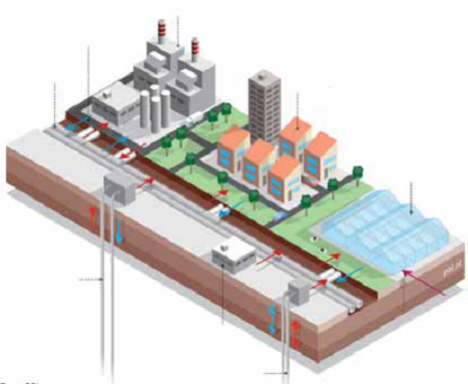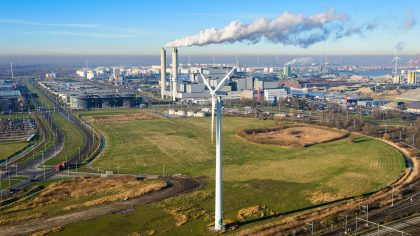This factsheet focuses on large scale networks. Large scale district heating consists of main heat source(s), back-up boiler(s), a primary heat transport pipeline, substations and a distribution network including connections to the dwellings. Inside a dwelling a heat delivery kit (with heat exchanger) is installed in order to transfer hot water to the central heating system inside the dwelling. This factsheet considers all components of the heat network but does not include heat losses of the main heat source(s) and heat losses of the heating systems inside the dwellings. Costs in the costs section are excluding costs of the main heat source.
Main heat sources that can be used for large scale HT heat networks are:- Combined heat and power (CHP) plants fired with gas, coal, muninipal solid waste or biomass- Heat plants (heat only boilers) fired with biomass, natural gas or other fuels- Industrial waste heat – Other renewable sources (e.g. geothermal energy).
Heat from the heat source typically has a temperature of 100-130ᵒC. A typical large scale network has a primary transport pipeline of about 5 km length (based on VESTA model) (PBL/VESTA, 2017). Between primary transport pipeline and distribution network there can be a main substation with a heat exchanger that lowers the temperature. Hot water delivered to consumers typically has a temperature of 90ᵒC and the return flow to heat source has a temperature of 70ᵒC (ECN, 2015). A large scale network typically has one main substation and multiple smaller distribution substations but there are also large scale networks possible without a main substation.
All information in the datasheets is also available in ESDL (Energy System Description Language). You can find them in the Energy Data Repository (EDR).



